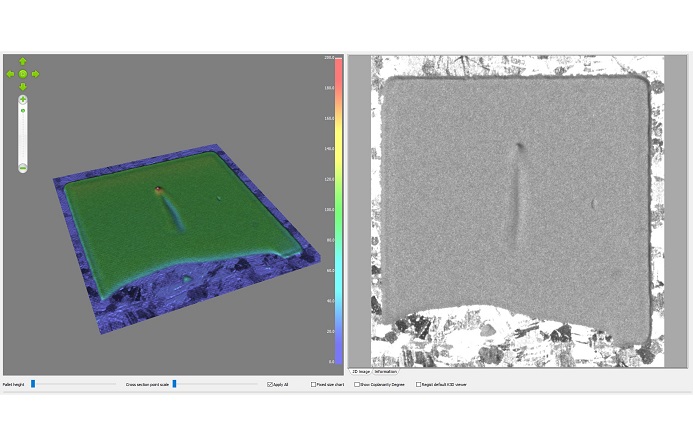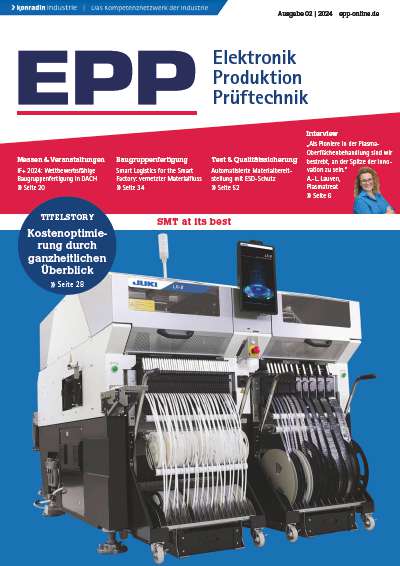The quality movement inmanufacturing has helpedreshape companies, and has created miles of research, job titles and career tracks, etc. But, when it comes to equipment itself, quality programs tend to focus on usage. Usually left out of the equation is equipment acquisition. To most people, quality means optimizing processes, not qualifying the best machine for the job.
Keith Howell, Speedline Electrovert,Camdenton, MO, USA
Despite this, the concept of applying 6-sigma quality methods to selecting manufacturing equipment isn’t so much new ground as a new approach to an old adage: do it right the first time. It’s a smart idea and a welcome development that’s starting to take hold in the electronics assembly and semiconductor industries.
Six-sigma philosophy:what is it all about?
Since its introduction over a decade ago, 6-sigma has been widely adopted by some of the world’s top companies who view it as the model of a quality program. 6-sigma is a quality and reliability benchmark defined as 3.4 defects per million (dpm) opportunities. It involves a set of best practices and methodologies centered on improving the quality of the processes, procedures and products in an organization.
6-sigma starts with the premise that we can’t improve what we don’t measure. For manufacturers, 6-sigma has been a vital tool for reducing time, money and effort involved in their processes. 6-sigma is regarded as an internal process designed to improve operations within a company. However, as manufacturers extend their quality processes outside their walls, they are beginning to influence the practices of suppliers, resellers and even customers – and are remaking their businesses in the process.
Procedure of vendor selection
One case in point involves Siemens Energy & Automation’s motion control systems business located in Lebanon, Ohio, and Speedline Electrovert, manufacturer of wave and reflow soldering and cleaning equipment for electronic assemblies. It was during the planning for manufacturing quality improvement in 1998, when the motion control systems department made the decision to replace its wave soldering equipment. Electrovert was one of several equipment vendors engaged in the selection process. During the procedure, Speedline outlined its own quality program that was developed in response to an increasingly global customer base. Like Siemens, these customers wanted the same equipment to be built to the exact same specifications, allowing for the same quality control wherever a plant was located.
Equipment manufacturers are also learning that quality doesn’t end at their door. Once a system moves to a customer site, vendors with strong quality processes will keep a history of a machine, including benchmarking data gleaned from statistical process controls. This data gives customers a clear path to calibrating a machine as well as the valuable history required by certification programs such as ISO 9000.
Decision to choose 6-sigma
Faced with replacing its wave soldering equipment, the Siemens business weighed the value of a quality process for the purchase of capital equipment. After some consideration, the company decided to apply 6-sigma tools and methodologies to the selection, acquisition and installation of the capital equipment.
To begin the process, a team, headed by Greg Goetz and Wes Ruggles, developed a business case and project charter. They determined that the objective of the project, in addition to replacing the existing wave soldering machine, was to reduce solder-related defects from the 150 to 243ppm range to a stabilized rate of 100 ppm or even less. This, according to the Handbook of Machine Soldering (by Ralph Woodgate, pp 206 to 207), is considered zero-defect soldering.
Siemens’ manufacturing team approached the capital acquisition process with the same 6-sigma tools and methodologies they had practiced elsewhere in the company. They conducted process mapping, as well as process failure mode and effects analysis (PFMEA). They measured Cpk, both at the vendors’ sites and at Siemens to evaluate process controls. They also looked at statistical process control (SPC) to ensure that the wave-soldering machine sustained its process capability. As a result, the team identified the need to improve quality, capability and productivity. Once they mapped it and made the case to management, they were on to the next step: gathering data.
In the search ofthe nature of things
With 6-sigma, it’s critical to start with questions. The first set of questions begins with what is called the process failure mode and effects analysis. In this case, the Vickers Siemens team asked, what is the function of the soldering process, and what’s the wave solder process intended to do?
Other questions followed:
• How could the wave solder process fail?
• What will the customer notice as a result of the failure?
• How serious is the effect of the failure on the customer?
• Why could the failure occur?
• How likely is the cause to result in a failure?
• What controls are in place to prevent the cause of failure?
• What is the likelihood of detecting the failure with the current control?
After defining potential failure modes and the potential effect of the failure, the team assigned numerical values to the attributes of severity, occurrence and detection. These attributes were poured into a matrix and used as a benchmark, when Greg and Wes visited user sites for evaluating the wave solder equipment under review.
Step by step
6-sigma is a helpful decision-making method because it outlines the steps for defining, measuring, analyzing, improving and controlling processes. In the measurement phase, Siemens decided which questions they wanted answered, as well as the function of the process. Before the company even began, it followed the 6-sigma methodology of creating a cross-functional team of specialists comprised, in this case, of two shift operators, a maintenance specialist, a process engineer, a supervisor and a business analyst.
With the team in place, Siemens moved to gathering and analyzing data. This involved comparing equipment during on-site visits to vendors, and seeing how operators and maintenance people interface with the machinery. As the team collected data, they built another matrix. This one translated machine features into cost savings. Eventually, this data formed the capital appropriation request (CAR), which was used to evaluate the economic value of the equipment.
On the road forprocess verification
Then came the road test. The team agreed that the wave soldering machines under review must operate within certain defect levels. This technical acceptance of the wave solder machine is so important that it’s done twice – first at the supplier site, and then at Siemens. To make its point, the team put in a condition that final payment was tied to acceptance of the machine meeting the 6-sigma qualifications.
The team used its matrix as a checklist. The first item on the list was process capability, or Cpk, a critical feature for quantifying accuracy and repeatability. The team looked at each process on the matrix – spray fluxer, test board damage, preheater, lambda wave and chip wave. Next, they evaluated the machines against benchmark data they had collected on their own processes. Since 1988, Siemens had monitored solder defects, as measured by ppm (parts per million) defects, at the post wave soldering inspection process step. These results are mapped out in a bar chart.
The Siemens team also compared the new machines against SPC data gathered on the company’s 12-year old machines. To do so, they regularly tested the machine using WaveRider which functions as if it were a board assembly. After passing through the wave-soldering machine, the Rider board is transferred to the WaveRider Dock, where data is captured and a printed report is generated. The results verify that the process is within the allowable control limits. Siemens also used the data to fine-tune the machine for optimum performance and to monitor the results to insure that the wave soldering process is in control.
Significant cost savings
One of the hallmarks of 6-sigma is its flexibility to encompass just about any process. The methodology and tools have been used to improve processes ranging from product development and manufacturing, to a wide variety of procedures. In this case, 6-sigma was critical for identifying total potential cost savings for the new wave soldering equipment. For instance, once the data was collected on the process failure mode and effects analysis, the Siemens’ department projected that they could achieve some $580,000 in savings over a 10-year period. This figure is based on making and maintaining improvements in three important areas: quality, capability and productivity.
The following is a further breakdown of the critical areas:
• Quality
• Solder shorts
• Insufficient solder
• Solder balls
• Rework and scrap
• Capability
• Bottom side SMT parts
• VOC-free fluxes
• Productivity
• Reduce process maintenance time
• Reduce parts and service costs
• Reduce changeover time
• Reduce usage of VOC type flux, alcohol and solder
• Reduce the cost to dispose of unusable flux
• Increase processing speed
• Allow the migration to VOC free flux
The final step
In the end, 6-sigma was more than a guiding principal for the company. It became the process for selecting equipment. The department started with a healthy list of possible wave soldering suppliers, then used 6-sigma to select suppliers and their wave soldering equipment. Ultimately, it chooses Electrovert, this subsidiary of UK-based Cookson Group, is known for introducing many of the technologies now standard in the industry. These include its patented Lambda Wave, the use of dual wave/dual pump soldering systems for through-hole and SMT components, inert soldering, hot gas debridging systems and others. Most important to Siemens, Speedline understood 6-sigma.
“We started talking to companies about 6-sigma in 1997, and asking about the specs of their machines,” commented in unison Greg Goetz, business analyst, and Wes Ruggles, process engineer, the 6-sigma greenbelts at Siemens. “We kept asking, ‘how do you know you’re within the 6-sigma tolerances?’ At the time, Speedline was the only oven supplier that even addressed quality from a 6-sigma perspective.” Goetz added, “Every aspect of business is a process. If you approach capital equipment acquisition as a process in the same way, it becomes something to move through. The process selects the equipment.”
zusammenfassung
Mit 6-Sigma-Strategie stellen Elektronikhersteller sicher, daß ihre Produkte mit einer Genauigkeit von über 99,9 % gefertigt werden. Das Problem ist, daß das Equipment dafür geignet und qualifiziert sein muß. Electrovert mit seinem Verständnis für 6-Sigma war für Siemens-Anwender ein wichtiger Partner bei Wellenlötanlagen.
Résumé
Grâce à la stratégie «6-Sigma», les fabricants de produits électroniques sont à même de garantir que leurs produits sont fabriqués avec une précision supérieure à 99,9 %. Le problème réside dans l’aptitude et la qualification de leur équipement. Electrovert et son engagement pour «6-Sigma» représentait pour les utilisateurs de Siemens un partenaire essentiel dans le cadre des installations de brasage à la vague.
Sommario
Con 6-Sigma-Strategie i produttori di componenti elettronici fanno sì che la produzione avvenga con una precisione del 99,9%. Il problema è che l‘equipaggiamento usato per tale scopo deve essere idoneo e qualificato. Electrovert, grazie alla sua comprensione di 6-Sigma, è stato per gli utilizzatori Siemens un importante partner per impianti di brasatura ad onda.
Fax +44-118-930-1401
EPP 158
Unsere Webinar-Empfehlung
Applikationen aus dem Bereich der Leistungselektronik gewinnen immer mehr an Bedeutung. Die Inspektion dieser Applikation lässt sich mit der bewährten Standardtechnologie der 3D-Messtechnik bewerkstelligen.
Teilen:












